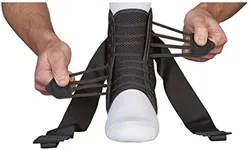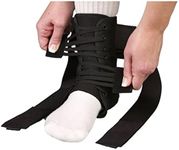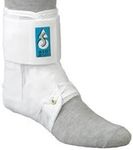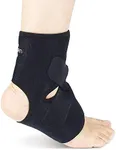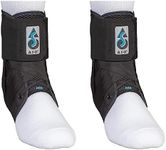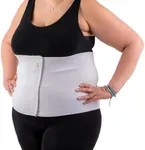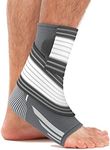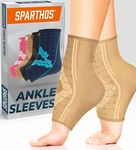Buying Guide for the Best ASO Ankle Braces
Choosing the right ankle brace is crucial for providing the necessary support and protection to your ankle, whether you're recovering from an injury, looking to prevent one, or need extra stability for sports activities. The right ankle brace can help you stay active while minimizing the risk of further injury. To make an informed decision, consider the following key specifications and how they align with your specific needs.Level of SupportThe level of support provided by an ankle brace is essential as it determines how much stability and protection your ankle will receive. There are generally three levels: mild, moderate, and maximum support. Mild support braces are typically lightweight and flexible, suitable for minor sprains or general support during low-impact activities. Moderate support braces offer more stability and are ideal for moderate sprains or for athletes who need extra support during sports. Maximum support braces are more rigid and provide the highest level of stability, often used for severe injuries or post-surgery recovery. Choose the level of support based on the severity of your condition and the type of activities you plan to engage in.
MaterialThe material of the ankle brace affects its comfort, breathability, and durability. Common materials include neoprene, nylon, and elastic fabric. Neoprene braces are known for their durability and ability to provide consistent compression and warmth, which can be beneficial for pain relief and swelling reduction. Nylon braces are lightweight and breathable, making them suitable for extended wear and high-intensity activities. Elastic fabric braces offer flexibility and comfort, ideal for mild support and everyday use. Consider your comfort preferences, any potential allergies, and the duration you plan to wear the brace when selecting the material.
AdjustabilityAdjustability is important for ensuring a proper fit and the right amount of compression. Ankle braces with adjustable straps or laces allow you to customize the fit to your specific needs, providing better support and comfort. This feature is particularly useful if you experience swelling or need to adjust the brace throughout the day. Look for braces with easy-to-use adjustment mechanisms and ensure they can be securely fastened without causing discomfort.
Size and FitThe size and fit of the ankle brace are crucial for its effectiveness. A brace that is too tight can restrict blood flow and cause discomfort, while one that is too loose may not provide adequate support. Most ankle braces come in various sizes, often based on shoe size or ankle circumference. It's important to measure your ankle accurately and refer to the manufacturer's sizing chart to find the right fit. If you're between sizes, consider the adjustability features to help achieve a snug fit.
MobilityMobility refers to how much movement the ankle brace allows while still providing support. Some braces are designed to limit movement significantly to protect a healing injury, while others offer more flexibility for activities that require a greater range of motion. If you need a brace for sports or daily activities, look for one that balances support with mobility. For injury recovery, a brace that restricts movement may be more appropriate to prevent further damage.
Ease of UseEase of use is an important consideration, especially if you need to put on and take off the brace frequently. Some braces are designed to be slipped on like a sock, while others have straps, laces, or Velcro closures. Consider how easy it is to put on the brace by yourself and whether it stays securely in place during activities. A brace that is easy to use will encourage consistent wear, which is essential for effective support and recovery.

